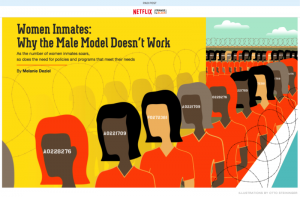ADOTAS – Every brand wants a smash viral video hit. Some will even go so far as to pay for views to achieve that. Paid media is necessary to jump start a campaign, but earned media – what truly makes a video viral – is infinitely more valuable to a brand.
Consumers place more trust in an advertiser’s content shared by a friend, colleague, or even another peer online than when delivered through paid media by the advertiser. Consequently, an earned video view is on average 40% more valuable than a paid view in its ability to drive brand consideration and purchase intent, according to a multi-year, consumer panel research conducted by Visible Measures in partnership with Insight Express.
This fact has major implications for advertisers. For marketers who thought of earned media as an exclusively efficient reach extension vehicle, it turns out that earned viewership is also more effective than paid viewership.
This begs the question as to what compels consumers to share branded content with others in their social sphere in the first place? And what strategies and tactics can be counted on to deliver predictable and scalable outcomes over time?
While there are different levers that brands can pull to create earned media, let’s look at those that are most opportune for 2014. This year provides US brands with not one, but three major media events in which to take part – the Super Bowl, the Olympics, and the World Cup.
Marketing events like these offer huge opportunity for earned media. In the last World Cup, for example, advertisers generated between 30% and 300% earned lift in viewership over paid media.
 During this year’s World Cup, it’s estimated that 750 million viewers will tune in on TV. An additional 400 million views will come from digital screens. And half of those views will be the result of earned media, viewership of shared, copied, and spoofed videos uploaded across YouTube, Facebook, Twitter, and over 200 other video-sharing destinations around the Web.
During this year’s World Cup, it’s estimated that 750 million viewers will tune in on TV. An additional 400 million views will come from digital screens. And half of those views will be the result of earned media, viewership of shared, copied, and spoofed videos uploaded across YouTube, Facebook, Twitter, and over 200 other video-sharing destinations around the Web.
So even if earned media is not the primary justification for investment in key sponsorships, endorsements, and high-profile activations during these events, the metric is certainly something that brands should be thinking about. After all, earned media shifts brand perception and related measures of brand equity that are central in establishing the ROI of marketing investments.
Analysis of 500 event-centric campaigns – from the World Cup, the Olympics, Wimbledon, and the Super Bowl – surfaced different classes of campaigns or “plays” that do extraordinarily well in driving earned media. Here are five tips to help drive earned media for branded, event-based campaigns.
1. Narrowcast Your Messaging. Contrary to the logic that broadcasting a message widely is the ticket to achieving mass awareness, it is necessary to narrowcast the message in order to drive maximum earned media impact and awareness.
Visible Measures data shows that fewer than 5% of campaign viewers drive more than 90% of the earned views on campaigns. For an event like the World Cup, that 5% are the flag-bearing patriots, the fans, the sports-parents, and the aspiring athletes. They are the ones who spring into action for reward of being the first to discover and share the latest content that reflects their passion.
Start by getting your message to a target group – the influencers – that have passion and zeal and then let them spread your message far and wide.
2. Feature the Stars of the Event. It pays to feature key players in whatever event in which you are participating. Those campaigns that offer content centered on the key players, and demonstrate what they do best in the field, inspire the fan base.
Examples of such campaigns include Nike’s “Write the Future” with Cristiano Renaldo, Duracell’s “Trust Your Power” with Patrick Willis and Derrick Coleman, and Gillette’s “Trick-shot” with Roger Federer.
3. Play up Pride and Patriotism. Patriotism is a powerful emotion and campaigns that appeal to that nationalistic pride charge up the patriots. It is important that brands speak to the patriots of specific countries with culturally aligned content.
Examples of proud, patriotic content include Pepsi’s 2010 World Cup campaign, “Oh Africa,” Adidas’ 2010 World Cup campaign, “The Quest,” and Chrysler’s 2012 Super Bowl campaign, “Half-time in America.”
4. Get the Fans Involved. Campaigns that sources content from the crowd have earned media behavior built into them. The most successful crowd-sourced campaigns create a contest that is native to the culture of the game.
Visa’s “Gooooal!” sweepstakes and Doritos’ “Crash the Super Bowl” contest are great examples of fan participation; more than 70% of their campaign views were generated through crowd-sourced content.
Seed Your Campaign
Successful brands will invest in paid media to jump-start their campaigns and they will flight media to fully capitalize on consumer enthusiasm in anticipation of the event.
In particular, campaigns that syndicate teaser content with media support before an event deliver 250% higher earned media than those who don’t seed in advance or let the content sit idle without paid media support.
Ideally, 50% of the views of a high-performing campaign will come during the anticipation phase (pre-event), followed by another 40% during the event. The balance should be dedicated to behind-the-scenes content that stretches consumer engagement for several weeks post-event.
Buying tons of auto-play views and watching the YouTube counter rack up in record time may offer instant gratification and bragging rights for many CMOs these days. Unfortunately, these views do not have the same impact on the business as the views relayed through enthusiasts in tight-knit communities with the fervor to pass along a brand’s message to a wider audience. While both approaches involve paid media commitment, the latter has proven to be more efficient and produces better brand impact.
Read more on ADOTAS
(551)
Report Post




